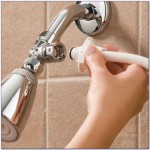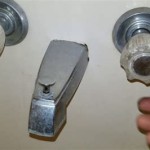Can I Wash My Dog In The Bathtub? A Comprehensive Guide
Bathing a dog is a necessary aspect of pet ownership, contributing significantly to hygiene and overall well-being. While professional grooming services are available, many dog owners prefer the convenience and cost-effectiveness of bathing their canine companions at home. The bathtub often seems like the most readily available option. However, before proceeding, it is important to consider numerous factors to ensure the safety, comfort, and effectiveness of the bathing process.
This article provides a detailed examination of the considerations involved in washing a dog in the bathtub, examining the pros and cons, outlining essential preparations, offering step-by-step instructions, and addressing potential challenges. Understanding these elements will enable dog owners to approach the task with confidence and minimize stress for both themselves and their pets.
Assessing the Suitability of the Bathtub and the Dog
The first step is to evaluate whether the bathtub is an appropriate venue for bathing the specific dog. Several factors must be considered, including the dog's size and temperament, the type of bathtub, and the availability of necessary accessories.
Dog size plays a critical role. Smaller dogs, such as Chihuahuas or Miniature Poodles, typically present fewer challenges in a bathtub. Their manageable size allows for easier handling and rinsing. Larger breeds, such as Great Danes or Saint Bernards, can be significantly more difficult. Maneuvering a large, wet dog in a confined space can be physically demanding for the owner and potentially stressful for the dog. Furthermore, large dogs may struggle to stand comfortably in a standard bathtub, leading to anxiety and difficulty in maintaining balance.
The dog's temperament is another crucial consideration. Some dogs are naturally comfortable with water and bathing, while others exhibit significant anxiety or fear. A dog that is fearful of water may struggle and resist being placed in the bathtub, increasing the risk of injury to both the dog and the owner. In such cases, desensitization and positive reinforcement techniques may be necessary before attempting a bath in the bathtub.
The type of bathtub also matters. A standard bathtub with a smooth, slippery surface poses a risk of slips and falls, particularly for larger or more excitable dogs. A textured bathtub surface or the use of a non-slip mat can significantly improve traction and reduce the risk of injury. Additionally, the height of the bathtub sides should be considered. High sides can make it difficult for the owner to lift the dog in and out of the tub, especially for larger breeds. In such instances, a portable ramp or steps may be necessary.
Finally, the availability of necessary accessories is essential. A handheld shower sprayer is highly recommended, as it allows for more precise and thorough rinsing than pouring water from a cup or bucket. A rubber mat or towel placed on the bottom of the tub prevents slipping. Dog-specific shampoo is crucial, as human shampoos can be too harsh for canine skin. Towels for drying are obviously necessary. Brushes and combs tailored to the dog's coat type are helpful for detangling and removing loose fur. Without these basic accessories, the bathing process can become significantly more challenging.
Preparing the Bathing Area and Gathering Supplies
Once the bathtub has been deemed a suitable location, thorough preparation is essential. This involves preparing the bathing area to minimize mess and stress, gathering all necessary supplies, and pre-treating the dog's coat.
Preparing the bathing area involves several steps. First, protect the surrounding area from splashes and sprays. Placing towels on the floor around the bathtub can absorb excess water and prevent slippery surfaces. Removing any loose items from the bathroom can also help to minimize clutter and potential hazards. If the dog tends to shake excessively, consider closing the bathroom door to contain the mess.
Gather all necessary supplies before starting the bath. This includes dog shampoo, towels, a handheld shower sprayer or rinsing cup, a non-slip mat, brushes and combs, and any treats or rewards that might be used for positive reinforcement. Having everything within easy reach will streamline the bathing process and prevent unnecessary interruptions.
Pre-treating the dog's coat can significantly improve the effectiveness of the bath. Brushing the dog thoroughly before bathing removes loose fur, mats, and tangles. This prevents these issues from becoming worse when wet and makes the shampoo more effective at cleaning the coat. If the dog has any particularly dirty areas, such as muddy paws or a soiled undercarriage, pre-rinsing those areas with water can help to loosen the debris before applying shampoo.
Regulating the water temperature is crucial for the dog's comfort and safety. The water should be lukewarm, neither too hot nor too cold. Test the water temperature with your wrist to ensure it is comfortable. Avoid using excessively hot water, as it can scald the dog's skin. Likewise, avoid using excessively cold water, as it can cause shivering and discomfort.
Finally, consider the overall environment. A calm and quiet atmosphere can help to reduce the dog's anxiety. Avoid loud noises or sudden movements that could startle the dog. Speak to the dog in a soothing and reassuring tone throughout the bathing process.
Step-by-Step Bathing Instructions and Addressing Challenges
With the bathtub and dog properly prepared, the bathing process can begin. The following step-by-step instructions outline the recommended procedure for washing a dog in the bathtub:
1.
Wet the Dog Thoroughly:
Gently wet the dog's coat with lukewarm water, using the handheld shower sprayer or rinsing cup. Ensure that the water penetrates the entire coat, reaching the skin. Avoid spraying water directly into the dog's eyes, ears, or nose.2.
Apply Shampoo:
Apply a small amount of dog-specific shampoo to the wet coat. Start at the head and work your way down the body, massaging the shampoo into the fur. Avoid getting shampoo in the dog's eyes, ears, or mouth. Pay particular attention to areas that tend to get dirty, such as the paws, legs, and undercarriage.3.
Lather and Massage:
Lather the shampoo thoroughly, working it into a rich foam. Use your fingertips to massage the shampoo into the skin, promoting circulation and loosening dirt and debris. Continue massaging for several minutes to ensure that the shampoo is effectively cleaning the coat.4.
Rinse Thoroughly:
Rinse the dog thoroughly with lukewarm water, using the handheld shower sprayer or rinsing cup. Ensure that all traces of shampoo are removed from the coat. Residual shampoo can cause skin irritation and dryness. Continue rinsing until the water runs clear.5.
Condition (Optional):
If desired, apply a dog-specific conditioner to the wet coat. Follow the instructions on the conditioner bottle. Typically, conditioner should be left on the coat for a few minutes before being rinsed thoroughly.6.
Dry the Dog:
Remove the dog from the bathtub carefully. Use a towel to gently blot the coat, removing excess water. Avoid rubbing the coat vigorously, as this can cause tangles and matting. For long-haired breeds, consider using a blow dryer on a low heat setting to speed up the drying process. Be cautious not to overheat the coat. Continue drying until the coat is mostly dry but not completely dry.Throughout the bathing process, common challenges may arise. A dog that resists entering the bathtub can be coaxed with treats or positive reinforcement. A dog that struggles or becomes agitated during the bath may need to be calmed with soothing words and gentle touch. A dog that shakes excessively can be contained by keeping a towel draped over its back. If the dog becomes overly stressed or fearful, it may be necessary to shorten the bath and try again at a later time.
Addressing specific coat types requires tailored approaches. Long-haired breeds benefit from thorough brushing both before and after bathing to prevent mats and tangles. Short-haired breeds may not require as much shampoo or conditioning. Double-coated breeds require special attention to ensure that the undercoat is thoroughly wet and rinsed. Regular bathing, combined with proper grooming techniques, can help to maintain the health and appearance of any dog's coat.

How To Bathe A Dog In 5 Easy Steps

How Often Should You Bathe Your Dog Guide Based On Breed Lifestyle

Bathing Your Dog Who S Baths 5 Tips For Stress Free Pupford

Do I Need To Give My Pet A Bath How Often It Urgentvet

How Often Should You Wash Your Dog American Kennel Club

How Often Should I Bath My Dog Dragonfly S

My Dog S Taking Baths What Can I Do To Help

How Often Should You Wash Your Dog Petbarn

How To Bathe A Dog Outside K H Pet S

How Often Should I Wash My Dog Washbar
Related Posts








